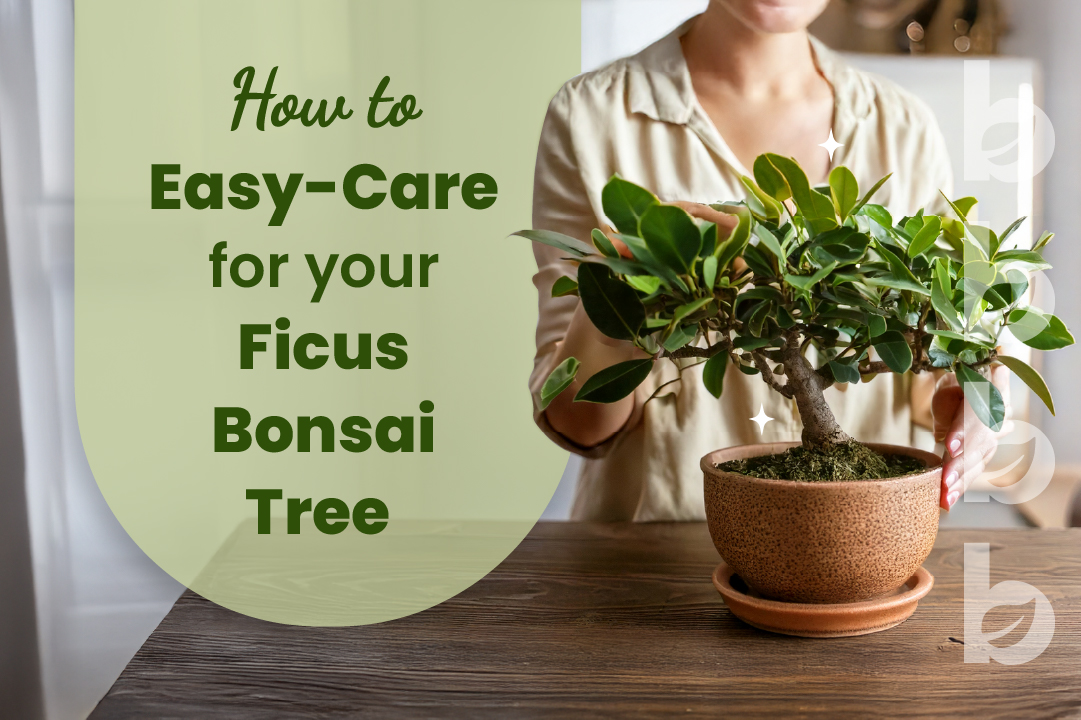
The Ficus Ginseng Bonsai is a captivating and beginner-friendly bonsai tree known for its thick, pot-bellied roots and glossy green foliage. This miniature tree not only adds an aesthetic charm to any space but also requires relatively low maintenance, making it an ideal choice for indoor gardening enthusiasts. Whether you're a bonsai novice or an experienced grower, understanding the right growing conditions, care techniques, and troubleshooting methods will help you cultivate a healthy and thriving Ficus Ginseng Bonsai.
Understanding Ficus Ginseng Bonsai
Ficus Ginseng (Ficus microcarpa) is a tropical bonsai variety native to Southeast Asia. It features thick, aerial roots resembling ginseng roots, hence the name. The tree has small, oval-shaped leaves that remain evergreen, making it a perfect indoor bonsai option.
This bonsai species is highly adaptable, tolerating various light conditions and humidity levels. However, like any bonsai, it thrives when given proper care. Let’s dive into the step-by-step process of growing and maintaining this fascinating plant.
1. Choosing the Right Location
Ficus Ginseng Bonsai thrives best in bright, indirect sunlight. It can tolerate lower light conditions, but for optimal growth, place it near a window with filtered sunlight. If growing indoors, consider placing it in an east- or south-facing window.
Ideal Lighting Conditions:
- Bright, indirect sunlight for 4-6 hours daily.
- Artificial grow lights can supplement natural light in darker rooms.
- Avoid direct sunlight, which can scorch the leaves.
To maintain a consistent environment, avoid placing your bonsai near air conditioners, heaters, or drafty windows, as sudden temperature changes can stress the plant.
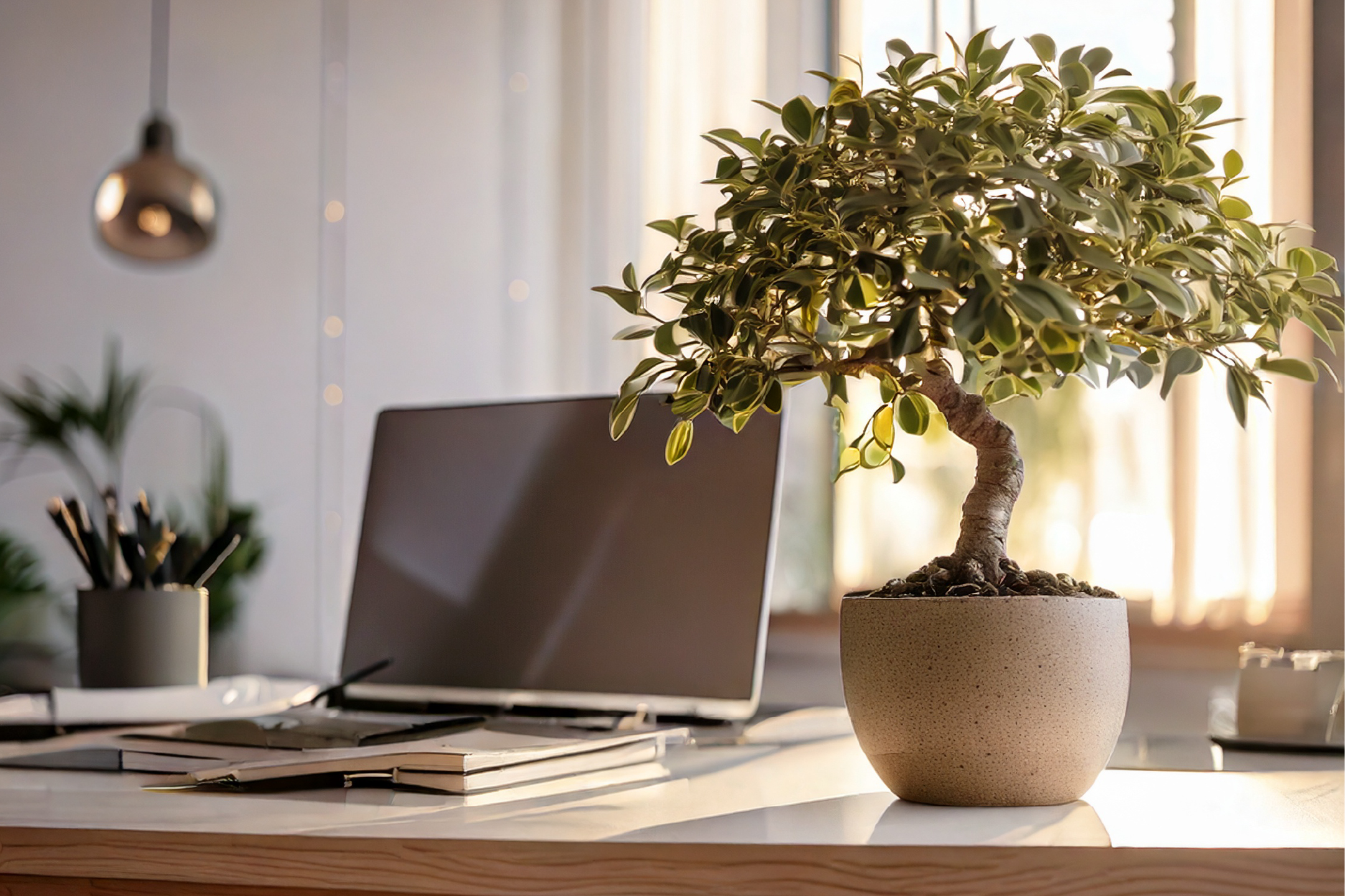
2. Soil & Potting Requirements
The right soil and pot selection play a crucial role in the health of your bonsai. The best soil for Ficus Ginseng Bonsai is a well-draining mix that retains moisture without becoming waterlogged.
Best Soil Mix:
- 50% Akadama soil (for aeration)
- 25% Pumice (for drainage)
- 25% Organic compost (for nutrient retention)
Choosing the Right Pot:
- A shallow bonsai pot with drainage holes is ideal.
- Unglazed ceramic pots enhance moisture control.
- The pot should be proportional to the size of your bonsai to prevent excessive root crowding.
Repotting your bonsai every 2-3 years will help refresh the soil and ensure continued growth.
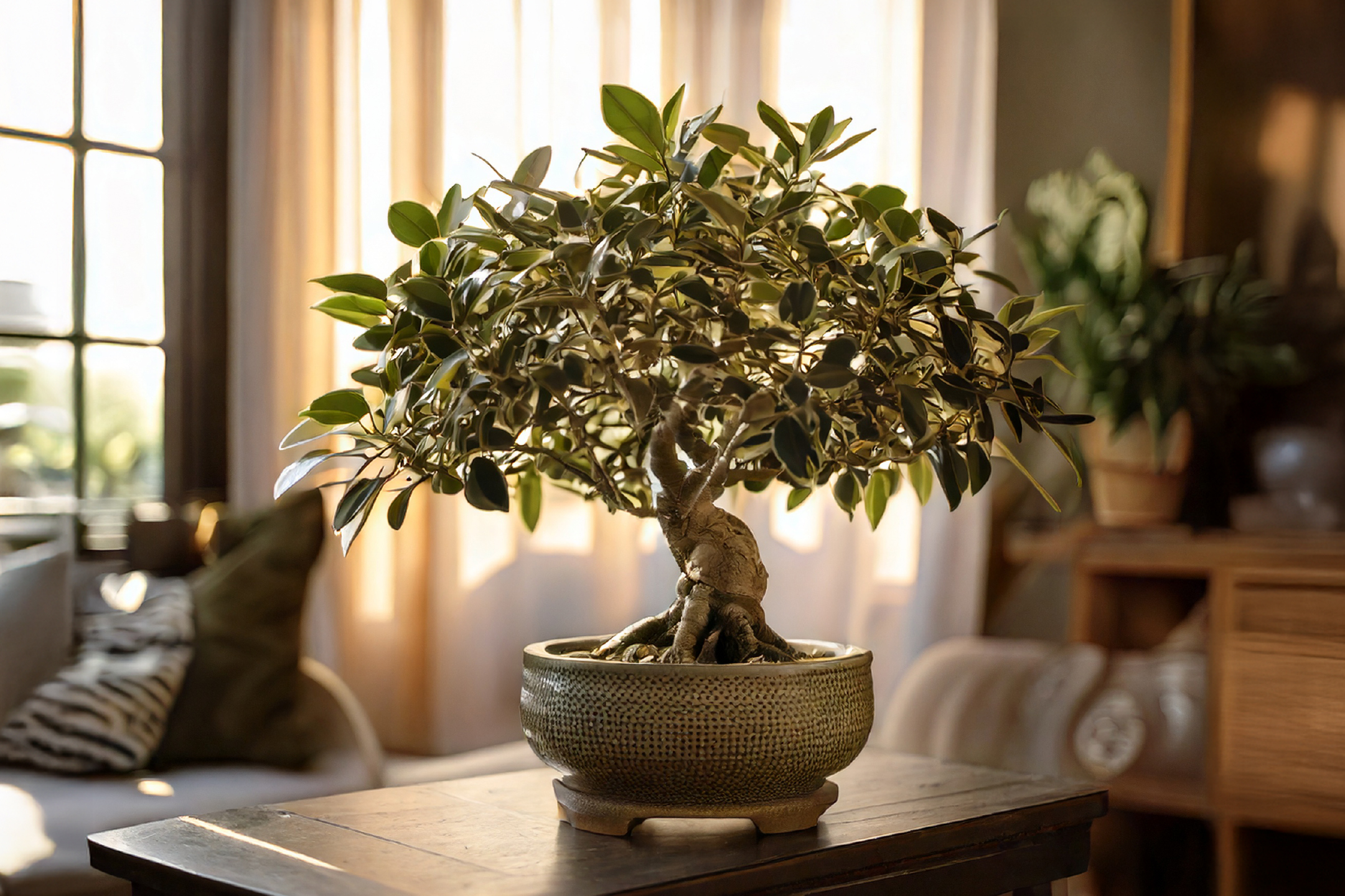
3. Watering & Humidity
Consistent watering is key to maintaining a healthy Ficus Ginseng Bonsai. Since it prefers humid environments, regular misting is beneficial.
Watering Guidelines:
- Water when the topsoil feels dry (about every 2-3 days).
- Use room-temperature water to avoid shock.
- Ensure proper drainage to prevent root rot.
- Mist leaves occasionally to maintain humidity.
Maintaining Proper Humidity:
- Place a humidity tray filled with pebbles and water under the pot.
- Grouping plants together can help create a humid microclimate.
- Avoid excessive dryness, as it can lead to leaf drop.
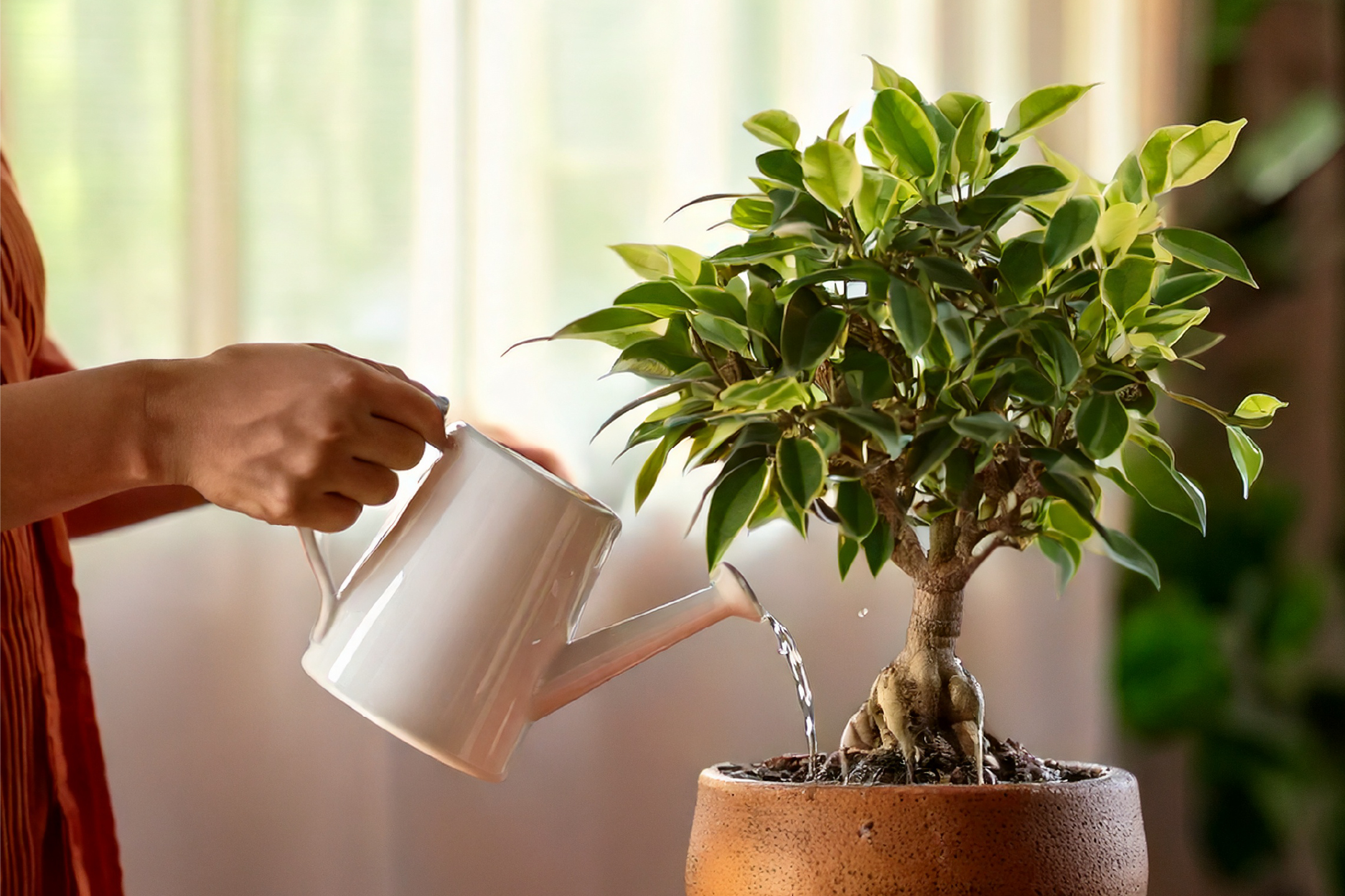
4. Pruning & Shaping
Pruning helps maintain the miniature form and encourages new growth. Since Ficus Ginseng Bonsai grows quickly, regular pruning ensures a well-shaped tree.
Pruning Techniques:
- Trim new shoots once they develop 5-7 leaves.
- Use bonsai shears to make clean cuts.
- Remove dead or yellowing leaves regularly.
Shaping with Wiring:
- Use aluminum wire to train branches into desired shapes.
- Avoid over-tightening to prevent bark damage.
- Leave wire for 2-3 months before removing.
Regular pruning not only enhances aesthetics but also strengthens the tree’s overall structure, making it more resilient over time.
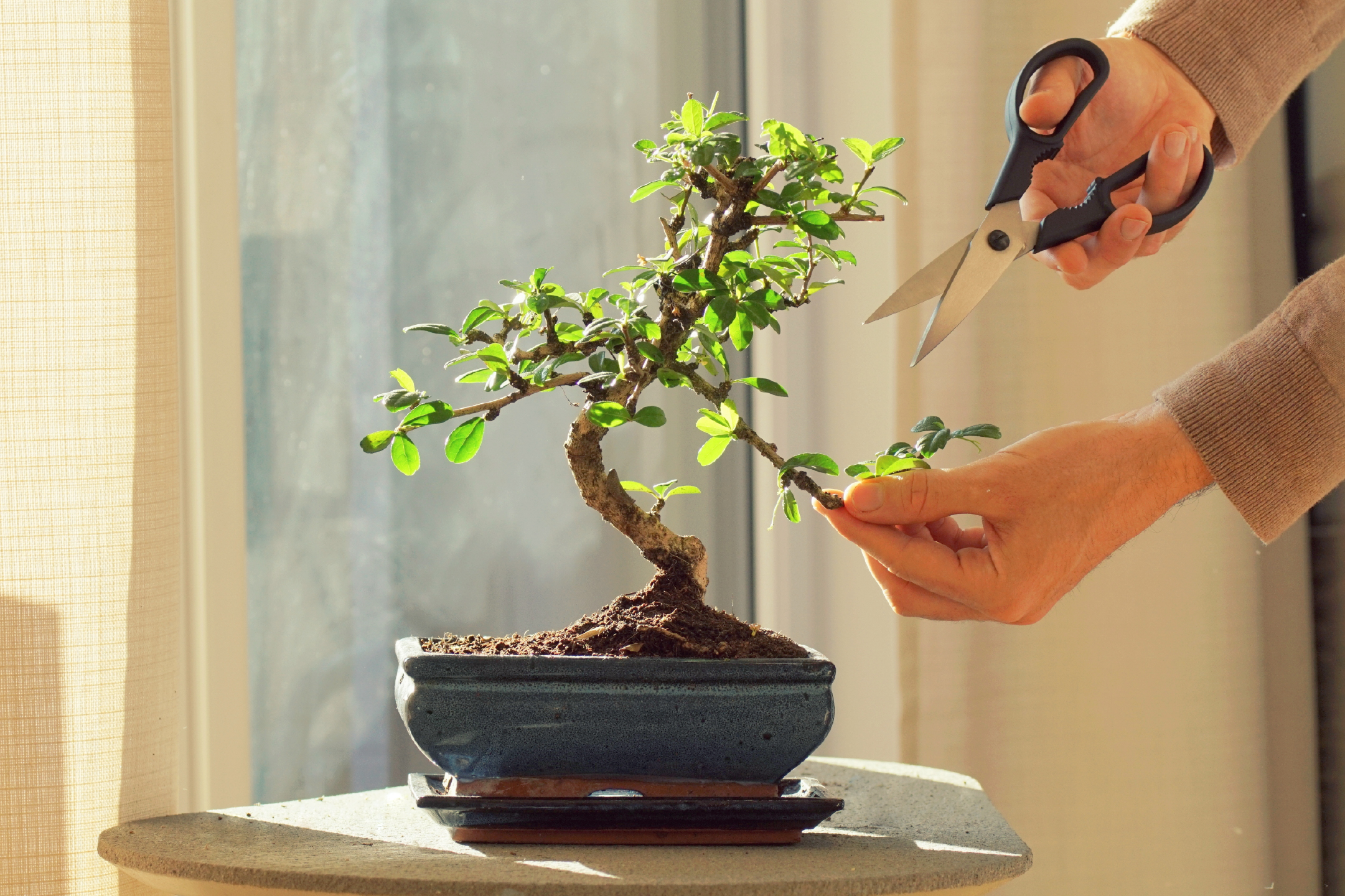
5. Common Issues & Troubleshooting
Leaf Drop:
- Caused by sudden temperature changes or overwatering.
- Keep bonsai in a stable environment with consistent care.
Yellowing Leaves:
- Indicates overwatering or poor drainage.
- Ensure soil is well-draining and reduce watering frequency.
Pests (Spider Mites, Mealybugs):
- Wipe leaves with neem oil spray or insecticidal soap.
- Keep plant in a humid environment to deter pests.
FAQs
1. Can I grow Ficus Ginseng Bonsai indoors?
Yes! This bonsai thrives indoors if placed in bright, indirect light with proper humidity levels.
2. How often should I repot my Ficus Ginseng Bonsai?
Repot every 2-3 years to refresh soil and prevent root binding.
3. Is Ficus Ginseng Bonsai beginner-friendly?
Absolutely! Its hardy nature and adaptability make it perfect for beginners.
4. Can I keep my bonsai outside?
Yes, but only in warm climates. Protect it from frost and direct afternoon sun.
5. What fertilizer should I use?
Use a balanced bonsai fertilizer (NPK 10-10-10) every 2 weeks during the growing season.
Where to Buy the Best Ficus Ginseng Bonsai?
If you’re looking for a healthy, well-cultivated Ficus Bonsai, consider DeHaat Bageecha Ficus Bonsai Plant. Their premium bonsais are nurtured with expert care, ensuring strong root structures and lush foliage.
Why Choose DeHaat Bageecha’s Ficus Bonsai Plant?
- Age & Size: Carefully nurtured for 4 years
- Premium Quality: Each plant is hand-selected and grafted to ensure beauty
- Natural Air Purifier: Ficus bonsai improves air quality, creating a healthier space
- Easy Maintenance: Ideal for beginners and experts alike—requires minimal care
- Perfect Gift: A thoughtful and unique gift for plant enthusiasts & nature lovers.
With the right care and attention, your Ficus Ginseng Bonsai will flourish, becoming a long-lasting and rewarding addition to your home or office.
Happy bonsai growing!



